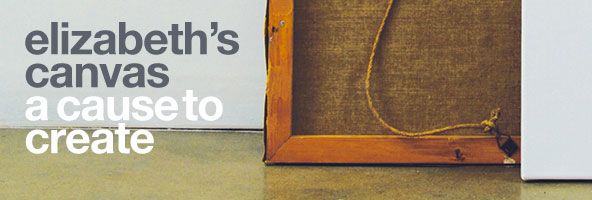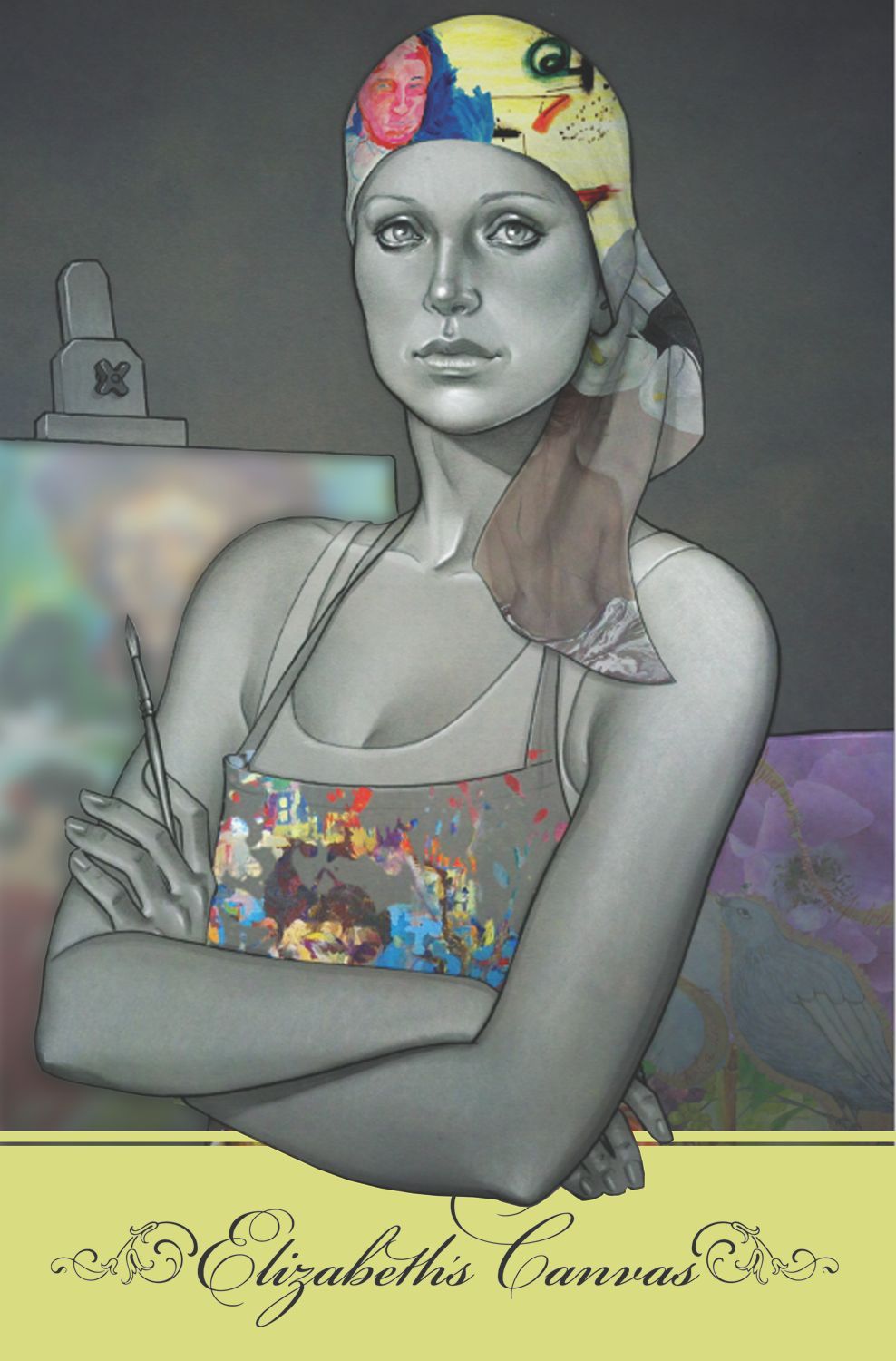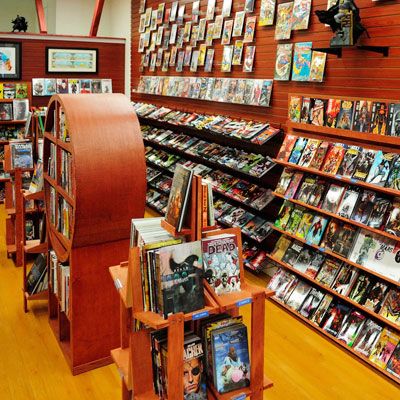Jud Meyers and Scott Tipton (founders of Blastoff Comics in North Hollywood) are the team behind the ambitious compendium comic book for Elizabeth's Canvas; a non-profit organization which offers cancer patients and people affected by cancer creative therapy through free art classes, including painting, drawing, and writing. Published by IDW in March, with all of the proceeds going to the organization (thanks to IDW covering the print costs) this book features work by well-known writers and artists from all over the world. Meyers agreed to sit down and tell us more about the book.
...
Sonia Harris: In March the book Elizabeth's Canvas will be in comic stores and is available now for people to pre-order. Can you give me a quick synopsis of the book?
Jud Meyers: EC is a collection of true stories detailing the lives of a handful of human beings who have all been touched by the specter of Cancer. A small child searching for a little daylight, an elderly couple clinging to memories, a nurse transforming from healed to healer, a scientist searching for answers and of course, Elizabeth, the woman who inspired this whole project.
SH: Can you tell me more about who is contributing to the book and what readers can expect?
JM: My partner (Scott Tipton) and I have spent the last year gathering together some of the industries' best writers and artists, all dedicated to telling these stories and raising awareness for an organization that focuses on using art (painting, photography, writing) as therapeutic healing before, during and after Cancer treatment.
We worked hard to find the perfect pairing of writer, artist and subject and even set up unique ways of all three communicating with one another to ensure their stories were accurate and reflective of the overall theme of the book. When you have a writer in Los Angeles, an artist in Italy and a scientist up North who won't leave his laboratory for even a few minutes, creativity seems to begin before anyone even says, "hello!"
Mark Waid was the very first creator to get involved in this. He was integral to its overall development and his hands are very much a part of the foundation of the entire project. If there was ever a creator whose vision as an artist mirrors our vision as responsible retailers, it's definitely Waid. Like Harlan, he's one of those creators who does so much charitable work, but doesn't feel the need to discuss it.
Gregg Hurwitz jumped on board right at the start. Gregg and his family are extremely active when it comes to community service and child development.
Then came the Italians. We love the Italians! Passion seems to be their common theme at all times. Even when I can't understand a damn word they say, I fall madly in love with them!
David Messina, Sara Pichelli, Elena Casagrande and Claudia Balboni all committed to providing pictures for the words from their studios across the ocean.
Harlan Ellison came out of hiding for this one, writing a sharp little story and Ryan Benjamin carved time out of his schedule to provide the required dark shadows Harlan likes to lurk around in.
Chris Ryall lent his considerable storytelling talents to the mix and Scott Tipton took time out of his Doctor Who/Star Trek alien madness to create something undeniably human.
I was lucky enough to have Todd Harris bring his sequential art skills to the table for my first published work and Jenny Frison capped it all off with a gorgeous cover image, filled with strength and beauty.
SH: How did you get involved with the organization?
JM: John-David Perry is the founder of Elizabeth's Canvas. He and I have been friends for years. We often talked about the comic book reading rooms I help build for various Children's Hospitals and orphanages around Los Angeles and he relayed stories to me from his daily work. Stories of struggle and hope and love and humanity. One of John-David's previous jobs was traveling the country as an oral historian, so he has a natural gift for recognizing inspirational stories. His mother, Elizabeth, is the inspiration for the organization and when he told me her story (not to mention his own), I decided I was going to find a way to be a part of what he was creating and somehow bring comic art into what his organization was building across America.
SH: What made you choose a compilation comic book as the way assist Elizabeth's Canvas?
JM: Initially, we discussed bringing in comic book artists to just spend some time with kids and their families. Maybe just spend an hour or two drawing and painting comic book style artwork. I quickly realized that this might be a bit short-sighted. Comic art is difficult. Panel grids are hard, even for artists with industry training. How can a child going through chemotherapy treatment hope to learn how to tell their story in an hour? When does a doctor have time to stop and draw some lines to show solidarity? How can a mom or a dad or a sister share their story on paper in the same hour?
We needed to help them tell their stories in comic form, but not force them to figure out a way to do it. Once we committed to the idea of bringing comic professionals to the table, we were able to broaden our scope of stories from children and adults battling Cancer to other people's stories that rarely get any spotlight. What about the nurses? The doctors? The scientists? Important public figures?
Scott came up with the simple idea of an interview format, leading to a writer/artist collaboration, leading to sequential art stories. Then we started the process of "building" the book.
SH: Did the contributors have free reign to create whatever stories they chose?
JM: We chose to pair what we felt were the best writer/artist team with the most compatible person's story. It's interesting when you discover that one of the grittiest authors in the crime/thriller novel genre is best suited for the story of a sensitive child and his imagination. The comic medium is so unique. It brings out the best in creators.
Once everyone was paired up, they told the stories in whatever way they felt best suited its content. I can't imagine dictating a style to Mark Waid, much less Harlan. If I'd have done that, I'd be floating in a river somewhere instead of doing this interview!
SH: Your new store incorporates so much community and charitable work as part of the basic, daily function. What spurred the decision to work that way?
JM: A "daily function" is a perfect way of putting it! It's the first thing I think about when I step into the shop or turn on the computer. "What can my company do today that helps someone?" Once I accomplish that, everything else is just gravy.
When Scott and I formed the company, we found that we had the same belief about giving back, not just to the community, but to the world. We see the largest companies in the world putting their backs into charitable works (Gap's Red campaign is a good example). Why can't small companies do the same? Especially ones that exist on the foundation of kids and family.
Since our website launched over a year ago, we've given a percentage of everything we make on a monthly basis to a different charitable organization. Since we opened our store, that has only continued to grow. On our site, you can see what charity we're giving to on any given month and we keep everything transparent at all times. I think that many business owners confuse the idea of "giving" with the idea of "giving away".
A few years back, the late Rory Root, one of the craziest and most intelligent retailers in comic book history, told me that the most powerful word retailers could bring to the world is "free". I disagreed with him (which he loved!) and told him that I believed the most powerful word was "give".
This new store is the third I've opened and it's quickly become the most successful. Yet, I've given more to charity in the past year than at any time in my retail life. The most important part of that is how I feel at the end of the day. Don't get me wrong, I love selling comics! But I love giving of myself to people in need far more. The fact that I can use my profession to do that is a blessing. All I have to do is commit to it and do a little something every day. All those little somethings add up to something pretty big in the end!
SH: What other forms of community & charitable actions have you got planned?
JM: 2013 is going to be bold and aggressive when it comes to the company's charitable work.
Right now (with the help of Elizabeth's Canvas), we're working on the building of a Blastoff reading library that will span an entire wing of LA County Children's Hospital.
We're developing a project that will entail ANY retail location in Los Angeles sponsoring a child from a hospital, clinic or orphanage. This child will receive books, comics, clothes, movies, games, whatever he/she needs to develop and thrive. Each shop will be hands-on with their child and do something every day to help them have a solid foundation for a successful life. A large company can "sponsor" the building of an entire village. A small retail business can sponsor the building of one child at a time in their very own neighborhood.
And the most ambitious project we've ever set out to accomplish is set to launch this summer. Hopefully, we can make it happen before the San Diego Convention rolls around. I don't want to reveal too much, but let's just say it involves a shipping container filled with comics, books, shelves, tables and couches. It also involves a boat, an ocean and an African township populated by kids with bare feet who've never even seen a superhero pamphlet before. Whoo-boy!
I'm so excited to bring our rocket ship to other streets, states, countries. Scott and I want to do better. We don't just want to do well. We want to do good.



